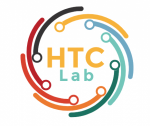This paper documents differences across higher-education courses in the coverage of frontier knowledge. Comparing the text of 1.7M syllabi and 20M academic articles, we construct the “education-innovation gap,” a syllabus’s relative proximity to old and new knowledge. We show that courses differ greatly in the extent to which they cover frontier knowledge. More selective and better funded schools, and those enrolling socio-economically advantaged students, teach more frontier knowledge. Instructors play a big role in shaping course content; research-active instructors teach more frontier knowledge. Students from schools teaching more frontier knowledge are more likely to complete a PhD, produce more patents, and earn more after graduation.
Latest posts by Ryan Watkins (see all)
- From Lived Experience to Insight: Unpacking the Psychological Risks of Using AI Conversational Agents - May 30, 2025
- Leveraging Dual Process Theory in Language Agent Framework for Real-time Simultaneous Human-AI Collaboration - May 29, 2025
- Identifying, Evaluating, and Mitigating Risks of AI Thought Partnerships - May 26, 2025
